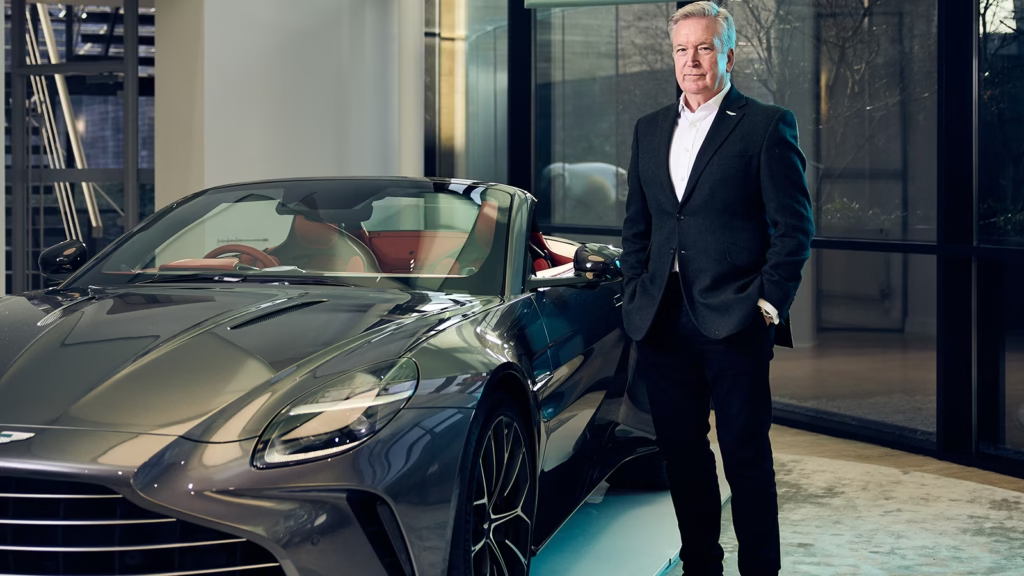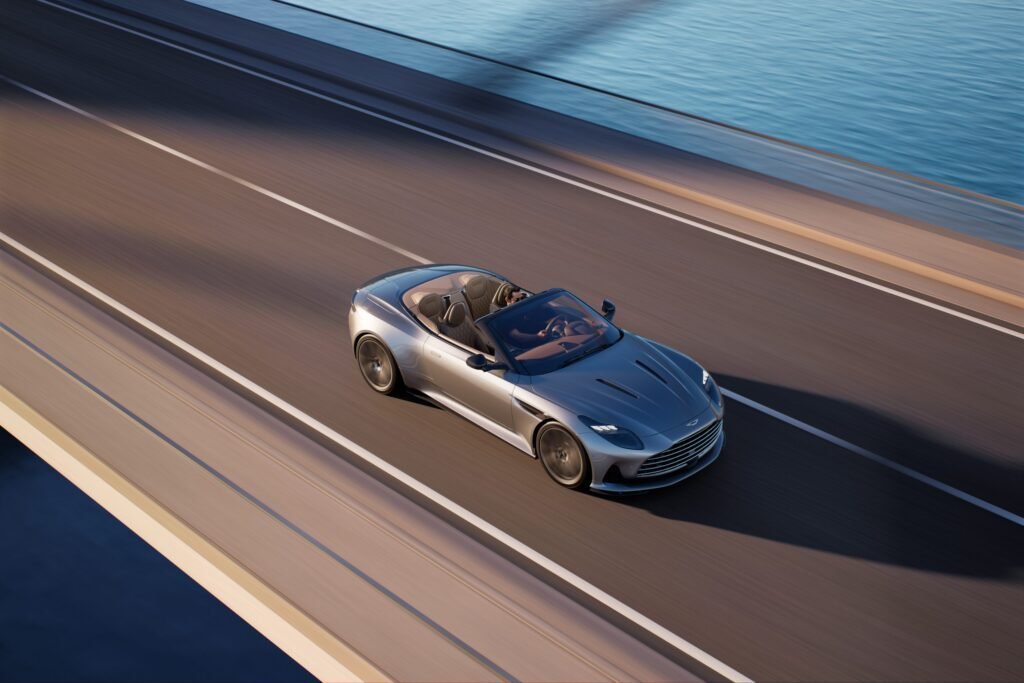Aston Martin, the iconic British automaker synonymous with luxury design and roaring engines, is again at a crossroads. In an unexpected twist, the company has slowed its march towards electrification, a decision that is turning heads across the automotive world. As competitors accelerate toward an electric future, Aston Martin is choosing to tap the brakes. Is this a bold recalibration, or a risky detour from the fast lane?
Hallmark Takes the Wheel: A Change in Direction
At the centre of this shift is Adrian Hallmark, the newly appointed CEO and former Bentley chief, whose arrival represents a chance not just in leadership, but in direction. When Adrian Hallmark took the helm as Aston Martin’s CEO in 2024, industry insiders did not anticipate just how quickly he was going to digress from the company’s route. Hallmark, who previously steered Bentley through one of it’s most successful modern eras, brings a reputation for sharp strategic thinking and luxury brand transformation. At Bentley, he championed electrification without losing its luxury image, a balance that Aston Martin is stepping towards.
Instead of racing to match the Electrical vehicle ambitions of competitors, Hallmark is urging a more calculated approach: ensuring that when Aston Martin does go electric, it does so without compromising its core appeal—performance, beauty, and craftsmanship. It’s not about being first to market; it’s about being right for the market. That means slowing down Aston Martin’s rush to electrification in favour of reinforcing its profitability and refining its identity in a crowded luxury market.

Electrical Vehicle Plans Delayed
Aston Martin has pushed back the release of its first fully electric vehicle, which was originally planned for 2025. Now, under Adrian Hallmark’s leadership, the company has confirmed that it is delaying its EV rollout for a 2030 launch instead. This decision marks a major change from the brand’s earlier ambitions.
The original plan involved reviving the Lagonda name as a luxury EV sub-brand. A concept was revealed in 2019, showcasing a futuristic electric SUV. But the project quietly faded, and now the focus is back on Aston Martin’s core lineup rather than risky new ventures. The delay gives Aston Martin more time to refine its technology and design, making sure their first EV lives up to the brand’s high standards. Still, it raises questions about whether waiting too long could hurt them in a market that’s quickly going electric.

The Market Response: Confidence or Concern?
Investor sentiment toward Aston Martin has shifted dramatically in the past year. Once buoyed by ambitious EV plans and luxury appeal, the brand is now grappling with deepening financial setbacks and growing market doubt.
Aston Martin’s recent financial troubles have taken a serious toll on investor confidence. As of April 2025, the company’s share price has dropped to around 56p, down from a high of 172.8p in April 2024, a staggering 67.6% decrease. This sharp decline reflects deep market concerns about the company’s performance, including its continued losses and delayed EV strategy.
Despite new CEO Adrian Hallmark’s plans to stabilise operations and refocus the brand, many investors remain cautious. The company posted a post-tax loss of £323.5 million in 2024, alongside an 8.9% drop in vehicle sales, adding further pressure to its already declining stock value. While there’s hope that new leadership and product launches may spark a recovery, the current stock performance suggests that the market remains sceptical. Aston Martin must now work to prove that it can deliver both innovation and profitability in a highly competitive luxury car market.

A Defining Moment for Aston Martin
Aston Martin stands at a pivotal crossroads. With Adrian Hallmark taking the reins, the company has made bold moves, delaying its EV rollout, shelving the Lagonda sub-brand, and shifting focus back to profitability. While these decisions may seem like a step back from innovation, they reflect a strategic attempt to preserve brand identity and financial stability amid mounting challenges.
Whether Aston Martin can deliver on its promise to blend heritage with high-tech innovation remains to be seen. But one thing is certain: the road to 2030 will define more than just its first EV, it will determine the brand’s survival in a rapidly electrifying world.
Written By: Mia Quisumbing
Published on: 23 April 2025